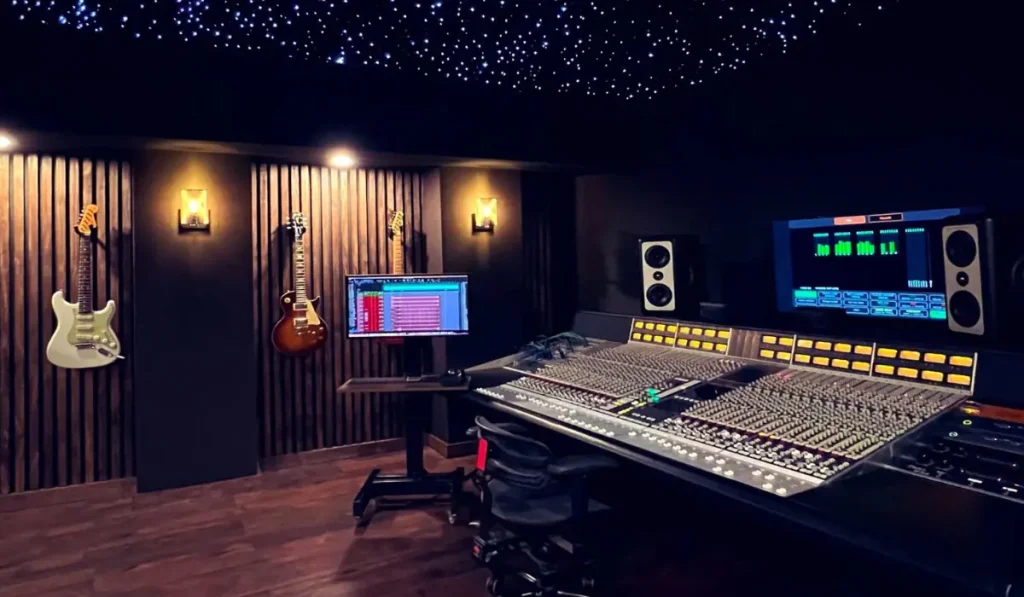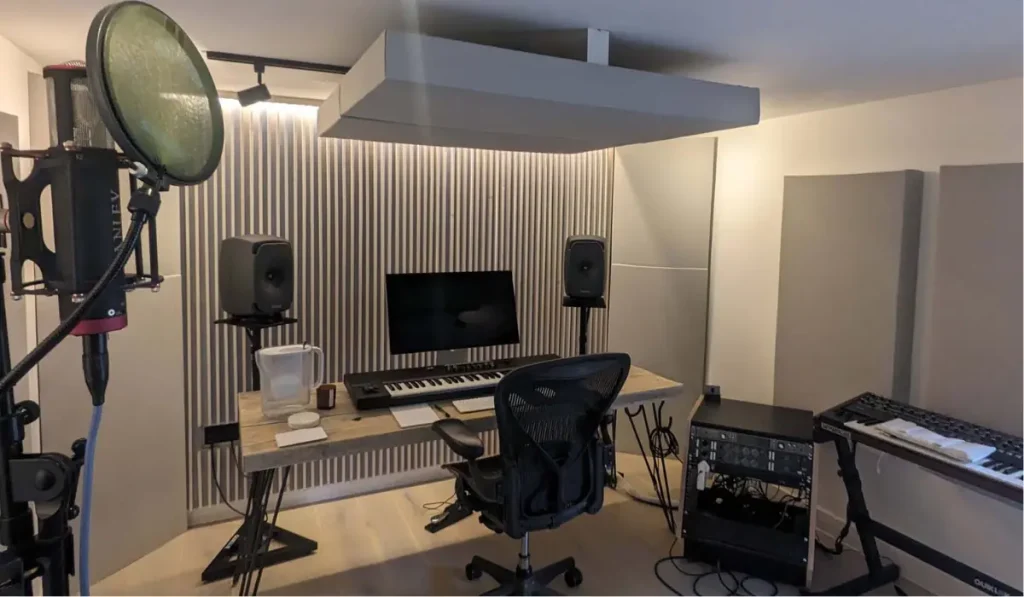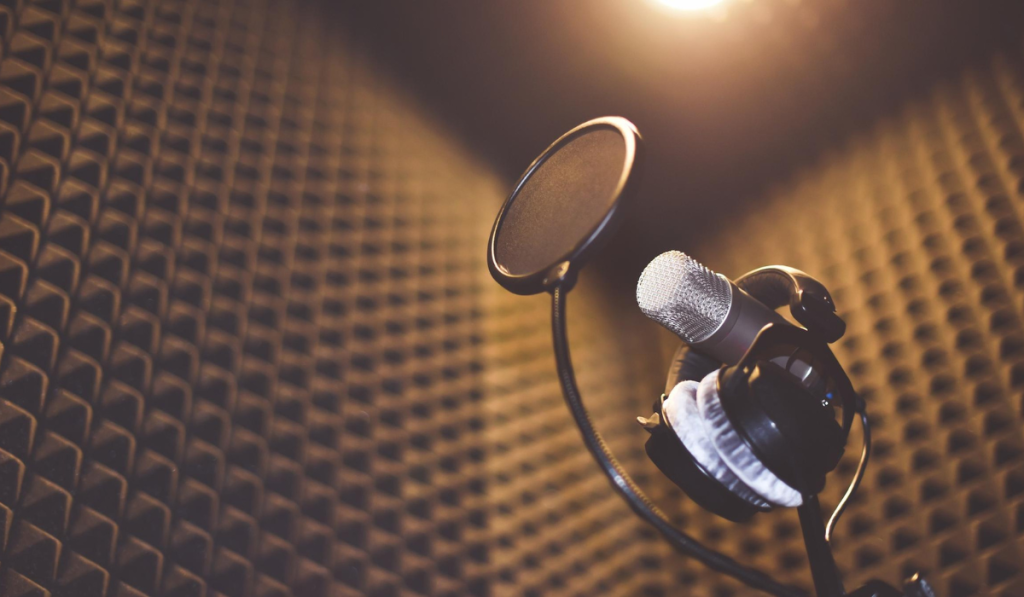In today’s booming content creation landscape, high-quality audio isn’t just a bonus, it’s a necessity. Whether you’re a music producer, podcaster, or voiceover artist, achieving crisp, clear recordings without unwanted noise interference is vital. That’s where professional soundproofing for recording studios becomes indispensable.
A well-soundproofed studio provides a controlled environment, free from external distractions and internal sound leakage. From the hum of HVAC units to urban street noise, professional studio soundproofing ensures that every note, word, or sound effect is captured with studio-grade precision. This blog dives deep into why and how to soundproof a studio professionally, the best materials, key considerations, and how to avoid common pitfalls.
Understanding Studio Soundproofing vs. Acoustic Treatment
Before we jump into materials and design strategies, it’s crucial to differentiate between soundproofing and acoustic treatment, two terms often confused.
- Soundproofing (also called sound isolation) is about blocking external noise from entering and preventing internal noise from escaping.
- Acoustic treatment focuses on controlling sound reflections inside the room to enhance audio quality.
Professional studio soundproofing is all about isolation, creating a fortress-like shield around your creative space.
Why Professional Soundproofing Is Essential
Investing in professional soundproofing offers numerous long-term benefits:
Noise Isolation
Keep out disturbances like traffic, neighbors, or air conditioning systems, critical for urban or home studios.
Improved Audio Clarity
Prevent sound leakage that could result in audio bleed, distortion, or poor mixing results.
Compliance & Privacy
Maintain sound control in shared commercial spaces or apartment complexes, and ensure client confidentiality.
Professional Credibility
Clients expect clean, quiet recording spaces. A professionally soundproofed studio builds trust and delivers quality.
Core Elements of Studio Soundproofing
Now let’s break down the key soundproofing components that make up a professionally isolated recording studio.
1. Room Within a Room Concept
The gold standard in recording studio sound isolation, this technique involves building a separate inner room decoupled from the outer structure. It dramatically reduces vibration transmission and structural noise.
Key Benefits:
- Eliminates flanking paths (e.g., sound traveling through walls or ceilings)
- Allows complete sound separation
- Ideal for vocal booth soundproofing and control rooms
2. Mass-Loaded Vinyl (MLV)
MLV is a dense, flexible material used in walls, ceilings, and floors to block airborne noise.
Applications:
- Behind drywall layers
- Under floors or above ceiling tiles
- Around ducts and HVAC penetrations
3. Double Drywall with Green Glue
Green Glue is a noise-proofing compound that converts sound energy into heat. When sandwiched between two drywall sheets, it offers high levels of noise reduction.
Why it works:
- Adds mass and damping
- Ideal for budget-conscious professionals
- Effective for home studio soundproofing
4. Soundproof Doors and Windows
Standard doors and windows are weak points in any soundproofing system.
Upgrades include:
- Solid core studio doors with acoustic seals
- Laminated acoustic glass with air gaps
- Specialized recording studio window designs
5. Decoupling Techniques
Decoupling prevents vibration transfer by isolating structural elements.
Techniques:
- Resilient channels or isolation clips on walls
- Floating floors with neoprene pads or rubber underlay
- Ceiling hangers for acoustic ceilings
6. Sealing Air Gaps
Sound travels through the smallest of cracks. A professional soundproofing job always includes:
- Acoustic caulk around edges
- Door sweeps and seals
- Outlet and lightbox insulation

Soundproofing for Different Types of Studios
Home Recording Studios
Challenges:
- Thin walls
- Close proximity to neighbors
- Limited construction options
Solutions:
- Use MLV and acoustic drywall
- Add rugs, bookshelves, and curtains to absorb ambient noise
- Use soundproof panels and foam for basic control
Vocal Booths
Focus:
- Maximize internal quietness
- Control reflections in tight spaces
Pro Tips:
- Use double-walled construction if possible
- Install bass traps and diffusers for balanced acoustics
- Ventilate quietly using duct silencers
Professional Music Studios
Priority:
- Complete isolation from street or adjacent rooms
- Transparent acoustics with tight frequency control
Recommendations:
- Use room-within-a-room method
- Include suspended ceilings and floating floors
- Consult professional studio designers for tailored solutions
Top Soundproofing Materials for Studios
Here’s a quick breakdown of the best materials used in studio soundproofing projects:
| Material | Purpose | Best For |
| Mass-Loaded Vinyl (MLV) | Sound blocking | Walls, ceilings, ducts |
| Acoustic Caulk | Sealing air gaps | Outlets, trims, seams |
| Green Glue | Damping sound vibrations | Between drywall layers |
| Rockwool Insulation | Absorbing sound | Inside wall cavities |
| Isolation Clips | Decoupling structures | Wall & ceiling framing |
| Solid Core Doors | Preventing sound leakage | Entry doors |
| Acoustic Glass | Minimizing transmission | Control room windows |
Mistakes to Avoid in Studio Soundproofing
Even a small oversight can ruin the effectiveness of your setup. Avoid these common errors:
- Using acoustic foam for soundproofing (foam absorbs, but doesn’t block sound)
- Ignoring door and window gaps
- Mixing incompatible materials without testing
- Over-relying on DIY solutions in professional setups
- Forgetting ventilation sound leaks
Always follow a comprehensive plan and prioritize material compatibility and installation quality.
Hiring a Professional vs. DIY Soundproofing
Depending on your budget, space, and project scope, you may wonder if hiring a professional is worth it.
When to DIY:
- You’re building a budget home studio
- You need basic improvements, like soundproof panels
- You’re technically skilled and can follow design specs
When to Hire a Pro:
- Commercial or client-facing studio
- Urban environments with heavy noise pollution
- Need for certification, code compliance, or architectural modifications
Professional soundproofing companies ensure long-term performance, tailored solutions, and higher value for serious content creators.

Future-Proofing Your Soundproof Studio
As your studio evolves, your soundproofing should too. Keep these in mind:
- Design for modular upgrades (e.g., removable wall panels)
- Consider future equipment changes that may alter acoustics
- Build with expansion in mind, leave room for growth
- Stay updated with eco-friendly soundproofing materials
Conclusion: Make Silence Your Superpower
In a world of content overload, clarity stands out. Studio soundproofing is not just about silence, it’s about audio integrity, professionalism, and creative freedom. While setting up a podcast space, music production lab, or film ADR room, investing in professional soundproofing ensures your recordings are as flawless as your talent.
Whether you’re an aspiring content creator, professional musician, podcaster, or studio owner, superior sound isolation is the foundation of great audio. At SoundKrafted, we understand that every studio has unique needs and that’s why we offer tailored studio soundproofing solutions that combine functionality, precision, and professional-grade materials.
From concept to installation, our team works closely with you to design an acoustically isolated space that eliminates outside noise, minimizes internal reflections, and maximizes recording quality.
With years of experience in acoustic engineering and soundproof construction, SoundKrafted ensures your recordings are protected from the unwanted noise that can compromise your work. Contact us today for a personalized consultation. We’ll assess your space, goals, and budget and craft a solution that fits your sound.

